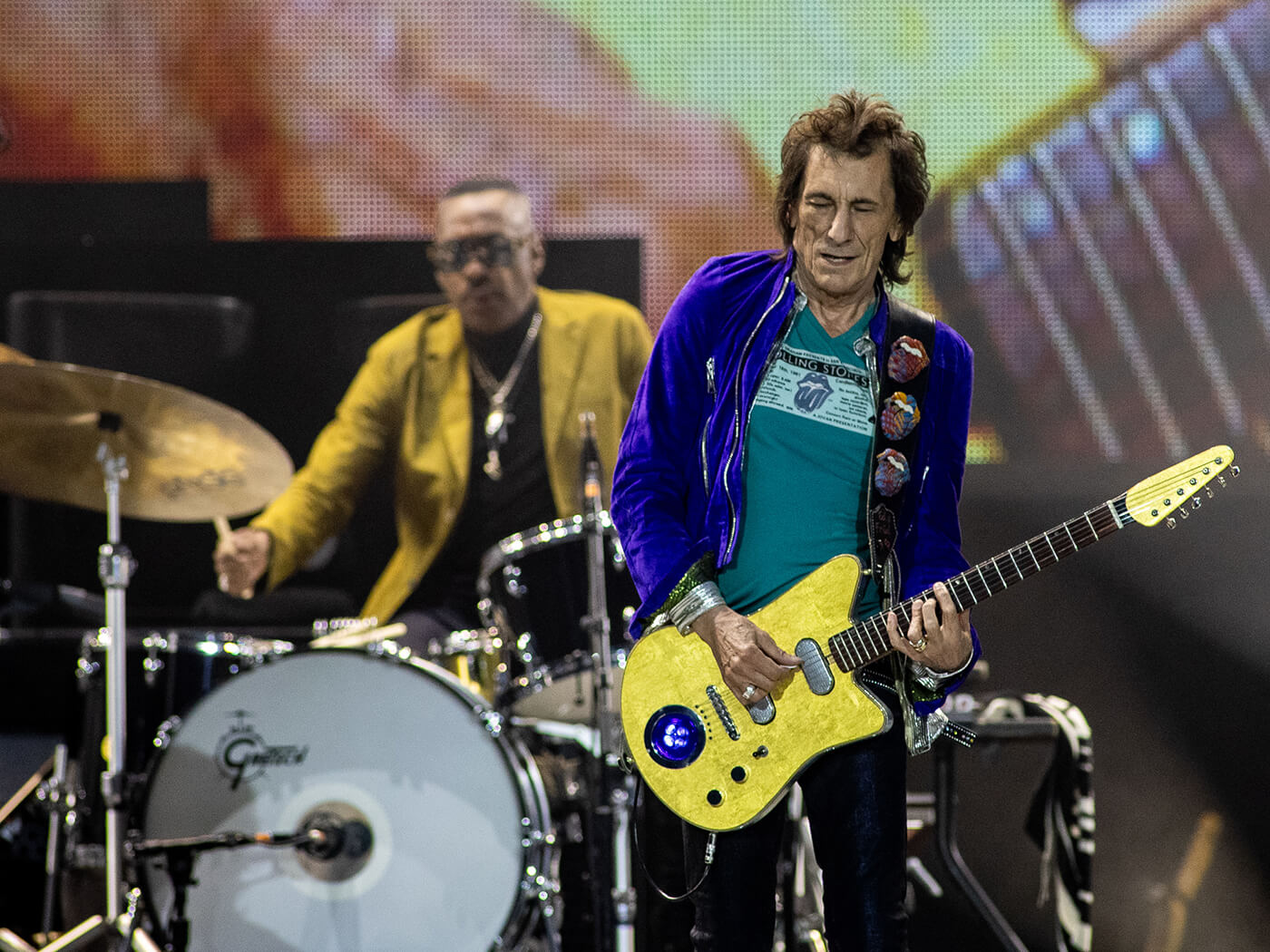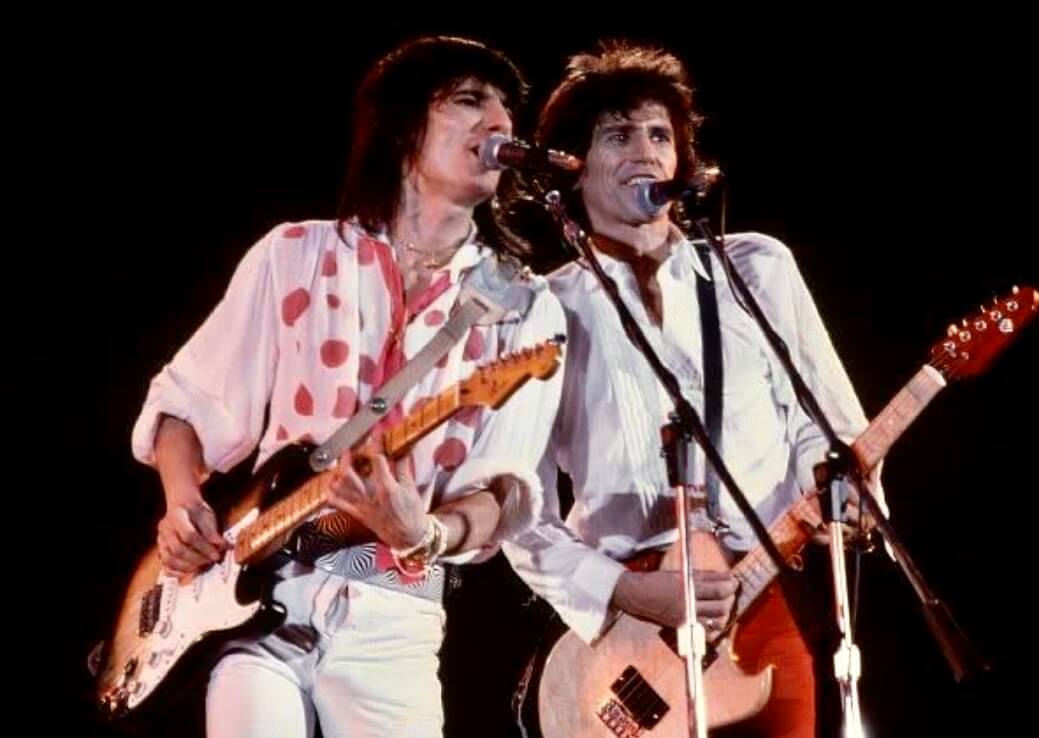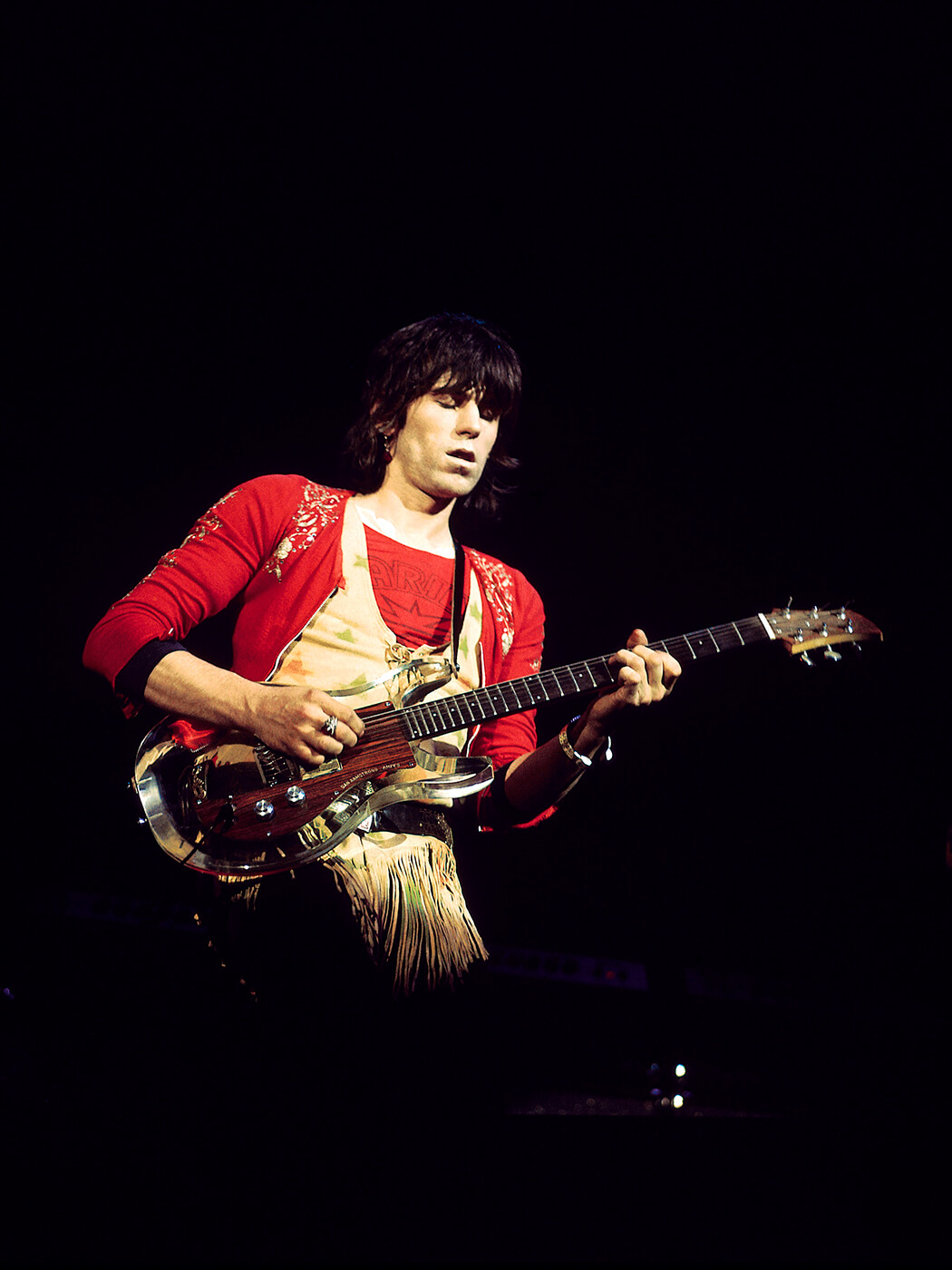6 facts about the Rolling Stones’ gear you probably didn’t know
From obscure instruments to blue LEDs, here are the facts about the Rolling Stones’ gear only superfans will know

Image: Nils Petter Nilsson / Getty
The Rolling Stones are one of the greatest and most famous bands of all time, with every minute detail of their recordings, gear, lives and even fashion dissected by fans and writers for decades as the legend of this most enduring bands has grown.
Despite all this however, there are some facts about the Stones’ gear that you probably don’t know, unless you really are a superfan…
Brian Jones’ Obscure Instrument
During the Rolling Stones RCA recording session in March of 1966, Brian Jones became fascinated with an old Appalachian acoustic instrument called a dulcimer. Brian explained the instrument thusly in the Rolling Stones Gear Book:
“The dulcimer is a flat piece of wood with banjo strings, and it is played like the sitar by sitting cross-legged on the floor. It’s an old English instrument, which was used at the beginning of the century. It gives a kind of bluegrass sound, and you pluck it like a harpsichord; I use a sharpened quill.”

Keith also tried his hand at explaining Jones’ fascination: “Brian was getting into dulcimer then, because he dug Richard Farina. [Farina was married to Joan Baez’s sister Mimi, with whom he worked as a duet.] It has to do with what you like to listen to. Like I’ll just listen to old blues cats for months and not want to hear anything else, then I just want to hear what’s happening and collect it all and listen to it. We were also listening to a lot of Appalachian music then, too.”
Jones ended up using the dulcimer, plucking the strings with a large goose feather, on the songs I Am Waiting and Lady Jane, but there was an issue translating the sound to the live concert setup as it was a small acoustic instrument. So Jones turned to Charlie Cobbett Jennings – the artist liaison at Vox and requested they make him an electric dulcimer. They ended up making Jones a prototype in the Vox Custom Shop. They ended up making six additional electric dulcimers after the first prototype. The new electrified instruments were pretty interesting but unfortunately, they were a total flop from a marketing standpoint.
The Metal Top
Although Keith Richards is known for his use of Zemaitis Guitars, which were created by famed British luthier, Tony Zemaitis, the second one ever produced was made for Ronnie Wood, who was not a member of the Stones at the time, he was in The Faces. He played the instrument on The Faces’ Top of the Pops appearance in 1971 which spurred an interest in the guitars and really helped the company get off the ground.

Zemaitis ended up building four 24-fret metal-top guitars for Wood, which he used from 1971 until 1995. He also built Ronnie Wood’s Desert Island metal disc top guitar, Keith Richards’ 5-string Skull & Bones guitar. The very first Zemaitis guitar went to Tony McPhee of The Groundhogs. The Groundhogs supported the Rolling Stones on their 1971 British tour at the request of Mick Jagger.
Blue Light Special
One of Ronnie Wood’s favourite live guitars of the past few decades has been his Raya custom-built Blue Light Guitar, which was made for him by a Finnish luthier named Kari Nieminen – the guitar features a unique shape and design but the most obvious feature on the guitar is the powerful blue LED light just behind the bridge that lights up when it is plugged in.

The Keef Signature Model That Never Was
Keith had what is widely considered to be the very first guitar technician in the touring circuit, Ted Newman Jones. While Keith Richards has never really had a production run of Signature instruments from any brand, Ted Newman Jones did create a line of Keith Richards Production models that were specifically designed to only have five strings. The blueprints for the guitar were drawn up in January of 1980 and Keith played the prototypes on stage during the Barbarians Tour.

They featured EMG humbucking pickups, along with a built-in preamp, and a custom-built five-string bridge. His plan was to build them in limited quantities of 25 per quarter [100 per year] but as far as we can tell, he never came close to hitting his quota because very few of them ever surfaced. We still have no idea how many were ever produced, although I did speak with a representative from Newman Guitars and they claim the number is less than 20. This was about as close to a Keith Richards Signature Model Guitar we may ever get.
Nazi Treasure
Exile on Main Street was recorded in the basement of Villa Nellcôte – a beautiful 16-bedroom mansion in Southern France. Keith Richards leased the villa from April 1971 until October 1973. It was there that many of the basic tracks for the iconic album would be laid down. The band and the engineers accredited much of the tones on that album to the damp and murky basement where they recorded. If we can surmise that certain instruments have mojo, we have to believe that the walls of certain studios have a certain vibe as well, and Villa Nellcôte was no exception.
The Villa Nellcôte has somewhat of an intriguing history. It was occupied by the local gestapo during the Nazi occupation of France in the 1940s. In fact, several band members and crew have commented that the vents in the basement had swastikas carved into them. Dominique Tarlé, a photographer who was staying there during the recording commented in an interview, “I found a box down there [in the basement] with a big swastika on it, full of injection phials. They all contained morphine. It was very old, of course, and our first reaction was, ‘if Keith had found this box…’ So one night we carried it to the end of the garden and threw it into the sea.”
Prototypes
The Beatles and Stones were barraged with offers from gear companies to use their instruments – it was a good strategy as a Beatle or a Stone playing your instrument on TV would ultimately lead to a surge in sales. As a result, The Rolling Stones took some of the most unique and creative instruments of the 60s and 70s through their first paces on the road. These prototypes include the Vox Mark VI, better known as the “Teardrop”, which was made specifically for Brian Jones, using a Stratocaster hardtail bridge. Bill Wyman received the prototype for the first bass version of the Teardrop as well – in fact the headstock on that bass still reads “Wyman Bass”. Brian Jones also received one of the very first Vox Mando-Guitars.
Bill Wyman also helped launch Dan Armstrong Guitars when he received a prototype of a double cut bass in 1974. This one was made of wood because he had previously had a Plexiglas version and it was simply too heavy for him.

Keith Richards got one of the first Dan Armstrong Plexiglas prototypes in 1969 – his has a white pickup, which is what was used in the prototypes, while the production models were brown. Those pickups were designed and built by Bill Lawrence. The Dan Armstrong Guitars were distributed by Ampeg, which was a company The Stones had been working with for a while already. The band also played some of the first Travis Bean Guitars in the mid-70s.
